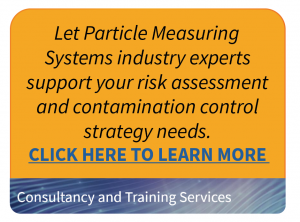Design a cleanroom according to Sterility Assurance Principles
In Part 1 of this blog series we learned how contamination is defined and what it means to control potential contamination. In Part 2 we discussed how the EU GMP Annex 1 2020 Draft Guidance regards CCS. In Part 3 we talked about how to define the potential root causes of contamination (in 3 steps). Finally, in Part 4 we will discuss how to interpret and apply the data gathered in the previous steps to design a cleanroom that conforms to Sterility Assurance Principles and is unique to your process. (We will call this “Step 4”.)
Define the actions to be implemented and their controls
Step 4 in building a CCS is the implementation stage. After the potential root causes have been identified, we will need to assign risk to those root causes. These risk designations are the critical indicators we will use to build CCS into the cleanroom design.
From the Risk Evaluation above, a Mitigation Plan (with actions) can be put in place with Controls built around them to provide feedback on their effectivity, as demonstrated here:
And last, but not least, maintain regard for the input of all operational and quality voices in building the Contamination Control Strategy process. Each voice has a unique and valid perspective that is critical to building a robust plan that will ensure feedback loops of control supporting your Sterility Assurance Principles.
Want to read more? Jump to other released PMS posts in this series:
- Part 1 of 4: How is Contamination Defined?
- Part 2 of 4: What do the guidelines say about CCS?
- Part 3 of 4: How to define the potential root causes of contamination.
- Part 4 of 4: Design a cleanroom according to Sterility Assurance Principles. (You are here!)
- Extra: Contamination Control Strategy FAQ’s
Learn more… Get the full paper.


